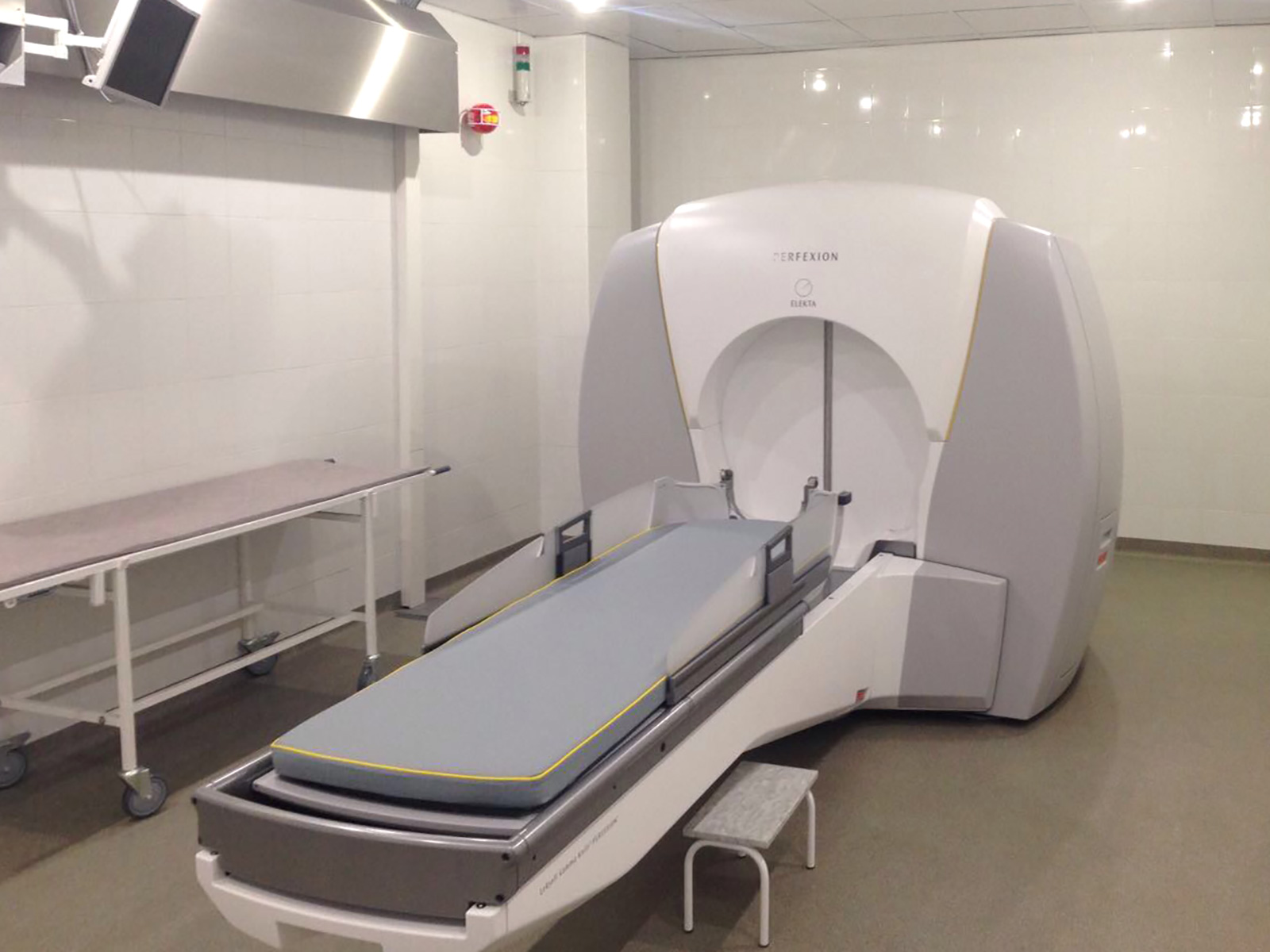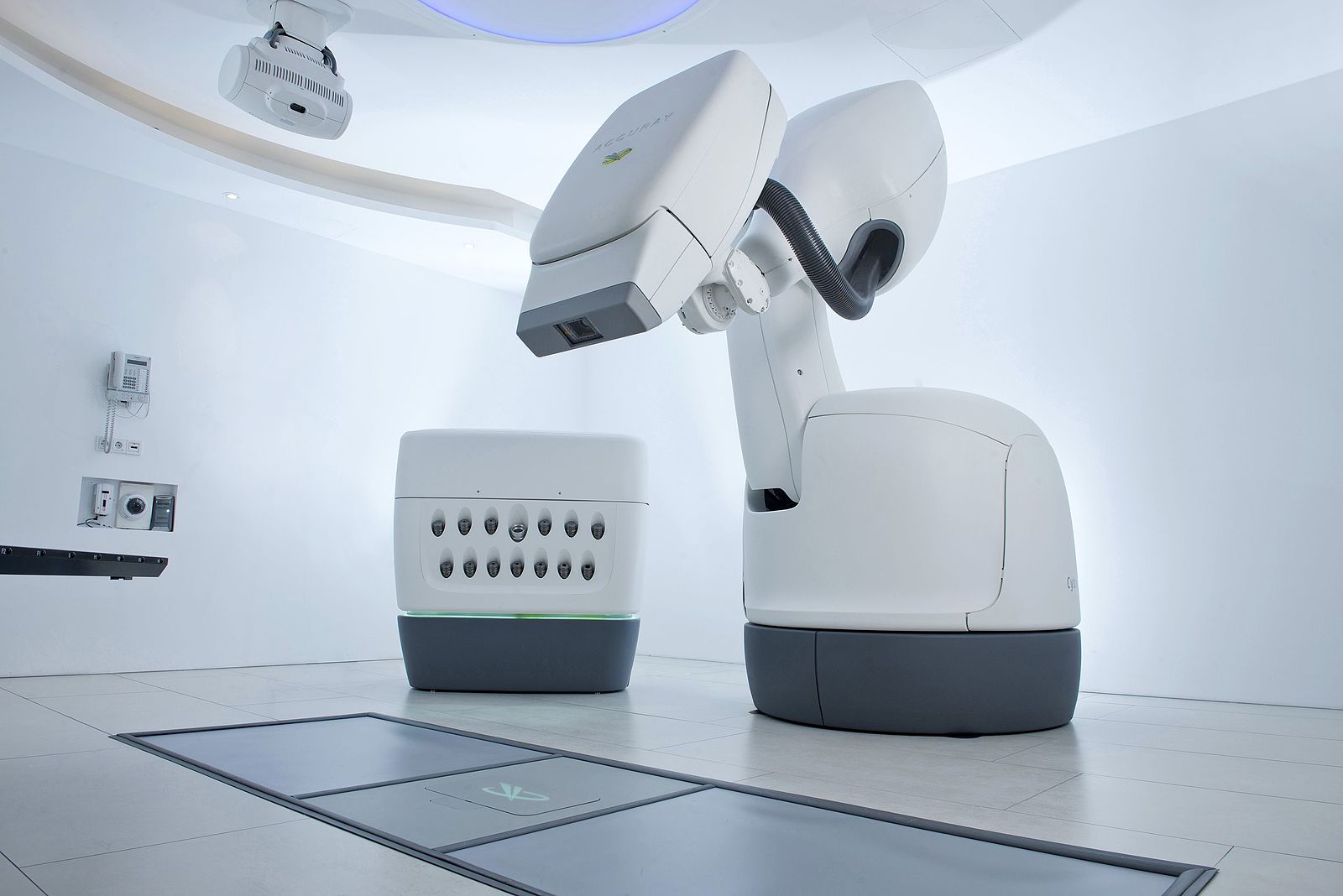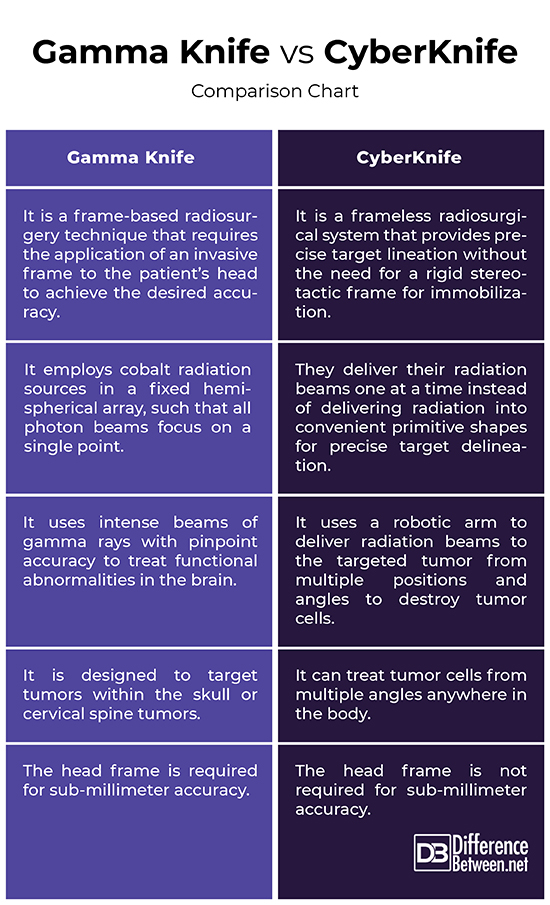Difference Between Gamma Knife and CyberKnife
Since it was conceived by a team of neurosurgeons and physicists in Sweden over five decades ago, stereotactic radiosurgery (SRS) has become one of the technological breakthroughs in neurosurgery. Radiosurgery was met with skepticism and criticism back then, considering it was an experimental concept markedly distinct from then-current radiation therapy and open neurosurgery approaches.
However, the radiation therapy is now at the cutting edge of radiation therapy techniques. The once-disruptive technique has now become the preferred treatment strategy for many benign and malignant brain tumors and functional conditions.
For decades, the Gamma Knife treatment represented the gold standard for brain radiosurgery and hundreds of thousands of patients have undergone the procedure.
While gamma knife remains the dominant stereotactic radiosurgery technique, a rapidly growing number of radiosurgical patients are now getting treated with yet another advanced from of radiosurgery called the CyberKnife. Let’s take a look at the differences between the two radiosurgical technologies.

What is Gamma Knife?
Gamma knife is one of the common techniques of radiation therapy used to treat benign and malignant brain tumors and other abnormalities in the brain. It is a non-invasive stereotactic radiosurgery procedure, unlike other forms of SRS, that uses intense beams of gamma rays with pinpoint accuracy to treat functional abnormalities in the brain. In 967, Leksell introduced the “Gamma Knife” procedure for clinical use in carefully selected patients. By 1975, a series of surgical pioneers at the Karolinska Hospital in Stockholm began to use a reengineered Gamma Knife for the treatment of intracranial tumors and vascular malformations.
The first Gamma Knife had 179 cobalt sources arranged in a hemisphere array, focused on a target point within the brain. The Gamma Knife radiosurgery was first used by Ladislau Steiner to treat an AVM patient in Stockholm in 1970. The Gamma knife evolved steadily since then and is now the best example of a disruptive innovation in neurosurgery as a wide variety of brain abnormalities are now treated with radiosurgery.

What is CyberKnife?
CyberKnife is one of the most advanced forms of stereotactic radiosurgery developed by a radio oncology company, Accuray, Inc. based out of Sunnyvale, California. The CyberKnife is an innovative frameless radiosurgical system based on the original concept of frame-based radiosurgery. It is a tool to deliver highly conformal doses of ionizing radiation to well-defined targets with steep dose gradients to spare surrounding tissue. It includes three components: a lightweight linear accelerator, a robotic delivery system and a non-invasive image-guided localization. It uses a robotic arm to deliver radiation beams to the targeted tumor from multiple positions and angles in order to destroy the tumor cells while keeping the radiation exposure to the surrounding tissue minimal. With its ability to deliver image-guides treatments, it is uniquely suited to treat both cancerous and non-cancerous tumors anywhere in the body.
Difference between Gamma Knife and CyberKnife
Treatment of Gamma Knife vs. CyberKnife
Both Gamma Knife and CyberKnife are the dominant methods of stereotactic radiosurgery (SRS) used to treat malignant brain tumors and other functional abnormalities in the brain. However, Gamma Knife is a frame-based radiosurgery technique that requires the application of an invasive frame to the patient’s head to achieve the desired accuracy. On the contrary,
CyberKnife is an innovative frameless radiosurgical system that provides precise target lineation without the need for a rigid stereotactic frame for immobilization. Additionally, in contrast to the frame-based Gamma Knife method, the high-dose treatments with CyberKnife could be divided into more fractions to control tissue dose, thereby reducing toxicity from treatment.
Procedure of Gamma Knife vs. CyberKnife
Gamma Knife is a non-invasive stereotactic radiosurgery procedure that uses intense beams of gamma rays with pinpoint accuracy to treat functional abnormalities in the brain. Despite the name, it involves no incision, not even a knife; a large metal frame – the collimator – pierced by hundreds of holes is mounted onto the patient’s head and a single, radiation dose is administered throughout the target volume using multiple exposures.
CyberKnife, on the contrary, uses a robotic arm to deliver radiation beams to the targeted tumor from multiple positions and angles in order to destroy the tumor cells.
Principle in Gamma Knife vs. CyberKnife
Gamma Knife is a gantry-designed system consists of a heavy collimator without any moving parts and its underlying principle is fairly simple – it employs cobalt radiation sources in a fixed hemispherical array, such that all photon beams focus on a single point and the intracranial target coincides with the isocenter of radiation.
By contrast, linear accelerator devices such as the CyberKnife deliver their radiation beams one at a time instead of delivering radiation into convenient primitive shapes, providing precise target delineation.
Gamma Knife vs. CyberKnife: Comparison Chart

Summary of Gamma Knife vs. CyberKnife
For decades, the Gamma Knife treatment represented the gold standard for brain radiosurgery and hundreds of thousands of patients have undergone the procedure. The CyberKnife is another capable and highly effective SRS system used to treat brain lesions, but its design has expanded the scope of stereotactic radiosurgery for tumors anywhere in the body. Gamma Knife is a non-invasive stereotactic radiosurgery procedure that uses intense beams of gamma rays with pinpoint accuracy to treat functional abnormalities in the brain whereas CyberKnife is a frameless radiosurgical system that uses a robotic arm to deliver radiation beams to the targeted tumor from multiple positions and angles to destroy the tumor cells.
- Difference Between Caucus and Primary - June 18, 2024
- Difference Between PPO and POS - May 30, 2024
- Difference Between RFID and NFC - May 28, 2024
Search DifferenceBetween.net :
Leave a Response
References :
[0]Image credit: https://commons.wikimedia.org/wiki/File:Cyberknife_M6_und_MLC.jpg
[1]Image credit: https://commons.wikimedia.org/wiki/File:Leksell_Gamma_Knife_Perfexion.jpg
[2]Benedict, Stanley H., et al. Stereotactic Radiosurgery and Stereotactic Body Radiation Therapy. Boca Raton, Florida: CRC Press, 2014. Print
[3]Niranjan, Ajay, et al. Gamma Knife Radiosurgery for Brain Vascular Malformations. Basel, Switzerland: Karger Publishers, 2013. Print
[4]Chin, Lawrence S. and William F. Regine. Principles and Practice of Stereotactic Radiosurgery. Berlin, Germany: Springer, 2015. Print
[5]Giller, Cole A., et al. Radiosurgical Planning: Gamma Tricks and Cyber Picks. Hoboken, New Jersey: John Wiley & Sons, 2011. Print
[6]Germano, Isabelle M. Linac and Gamma Knife Radiosurgery. Stuttgart, Germany: Thieme, 2000. Print
